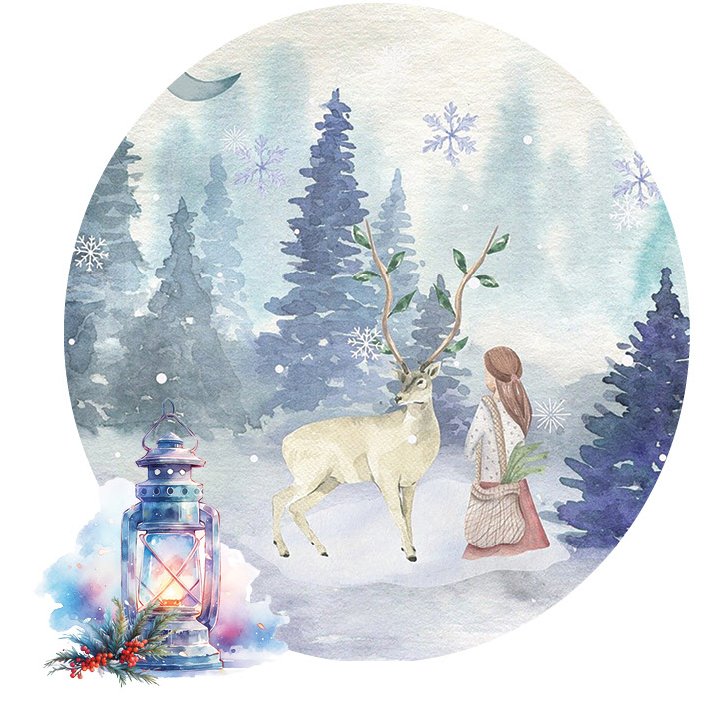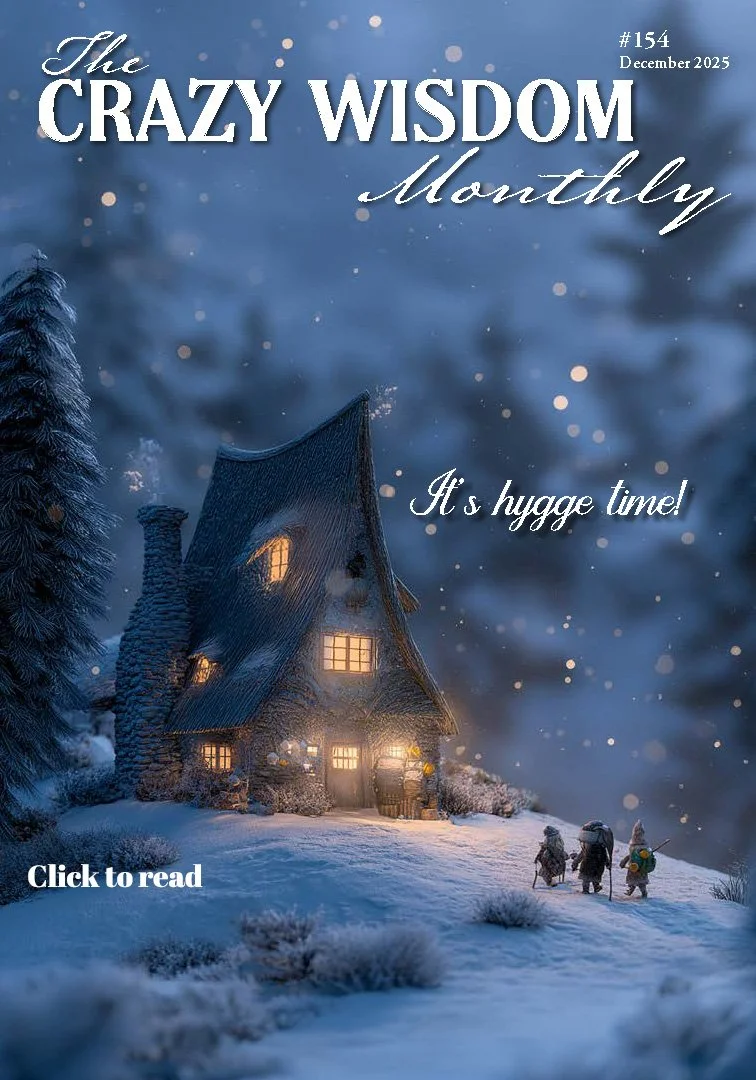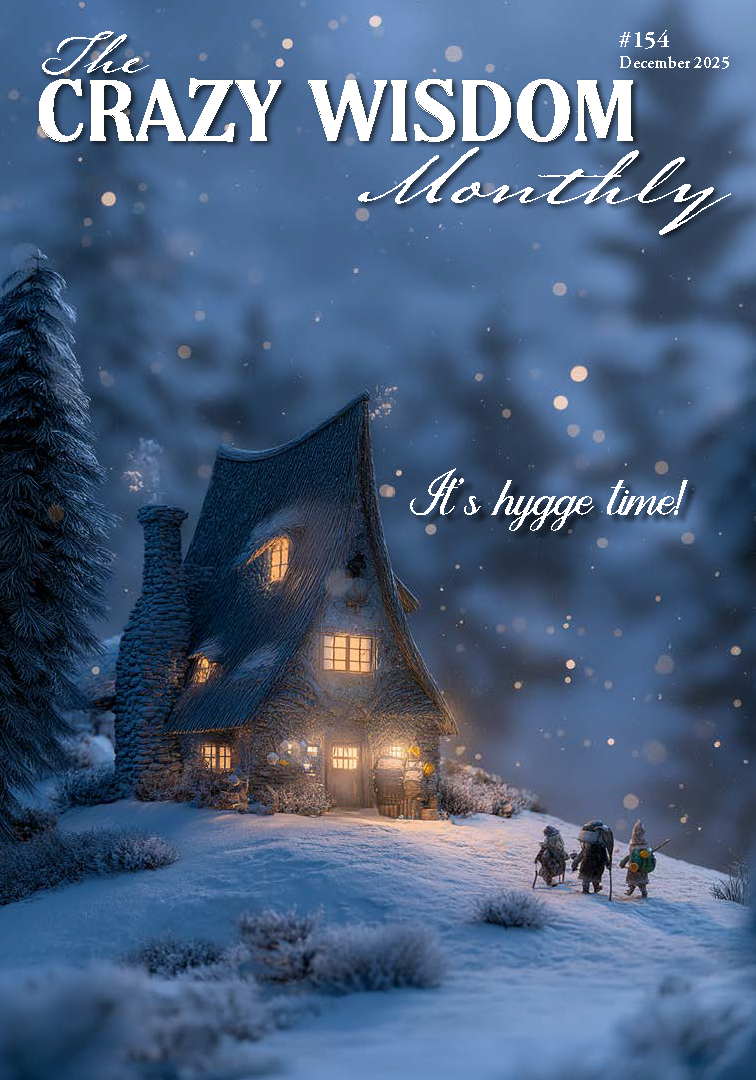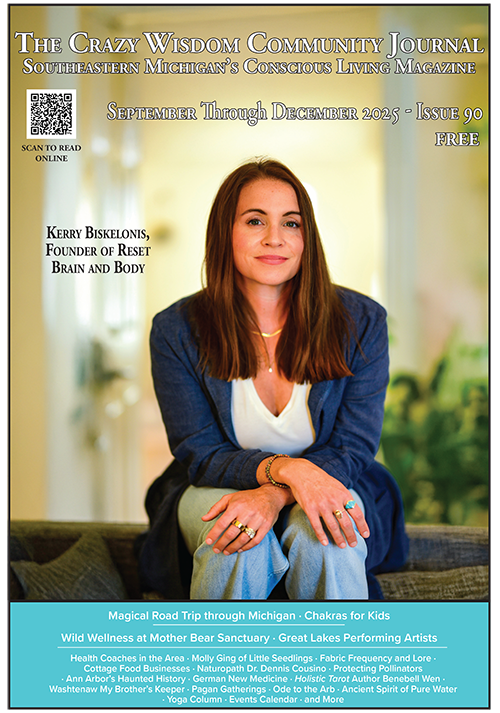By Irena Barbara Nagler
In high school, I’d been set free to take French classes at the university. Waiting in the library to be picked up, I wandered and read. On a physical level I was hungry for more than stories. I didn’t eat much breakfast and found the atmosphere at school non-conducive to lunch. Like many students locked into what seemed an alien rhythm, I existed in a tattered state.
I didn’t want to be in high school. It was bleak, over-structured, and laced with the belief that we could not be trusted to conduct our lives with any wisdom. At the same time, I knew that I was learning things that had nothing to do with the classes I was enrolled in.
I read all the stories of E.M. Forster, including The Machine Stops, which hasn’t lost its relevance any more than Huxley’s Brave New World or Orwell’s 1984.
I also read The Other Side of the Hedge. That Forster story was satisfying and inspiring at the time—a parable for freaks and adolescents. It has accrued another level of relevance in the tension of an electronic grid that can remove us from direct connection and the full use of our senses in the immediate environment.
On a road bounded by dry hedges, the protagonist, wearing a pedometer, is forever in motion. So is almost everyone he knows. According to rumor, certain people, in an abject failure of will, fall by the wayside and land on the other side of the hedge. Of course, the protagonist succumbs to the hedgerow in the middle of the story and finds himself in a bucolic landscape where it seems at first that no one is going anywhere: just living. By the end of the tale, he has recognized the man who first helps him there as his long-lost brother.
Forster’s hedge is sometimes interpreted as death and the realm beyond it as an afterworld. Having long had a sense that we are living with missing time, I never saw it that way. There are possible worlds where our transition from what we call indigenous living to modernity is not so abrupt or violent. There are timelines in which the transition is slower from the early 1990s to the present super-connected, yet quite profoundly disconnected world. Steps have been skipped, leaving raw gaps in experience, information, and intimacy with each other and our earth. Our version of global interconnection is riddled with divisive and exploitative hedges.
At this time, in 2024, people have experienced a gap after a deliberate, ragged break with “the beforetime.” We don’t know what might have happened had life been allowed to continue as accustomed, or with less extreme measures, during the fear-infused and obsessive “Covid years.” The results bear some similarity to what people experience during and after wars and other disruptive events. There was much opportunity for learning and for honing observation, expression, and commitment to values.
Minutes have only existed on clocks since the Industrial Revolution. Before that, even hours may have seemed constrictive. Orienting by longer intervals might generate an expansive time-sense compared to the digits with which we often hound ourselves and that short-circuit the ways in which eternity can breathe into time.
On the other side of the hedge, we can find another flow, for at least an interval of time. By our measures it could be a day, an hour, an evening, a moment. There is no going backward, but breaches can be healed as we carve portals out of air, imagination, communion with each other and the living system, and pieces of earth in secret gardens. It has to do with the perception and shaping of space outwardly, but more with what we do with what we have.
I went to an elementary/middle school in Kalamazoo. The building was composed of three connected, Greek-style brick structures with enormous white pillars, on a hilltop that had once housed a Potawatomi village. A wild brushwood straggled down the hill to an area of big playing fields, upper and lower levels connected by a long cement staircase.
Our official playground was on the hilltop outside the school. It was blacktopped over, but had beautiful, ancient oak trees that we could see out of classroom windows; we peereddirectly into branches from the upper levels of the building.
There were oak trees on the wooded hillside as well, bushes with fantastic tunnels through them, and wild grapevines. We weren’t supposed to play there. The only exception was the use of a sledding area in the winter.
Of course, some of us did play there, preferring it to either the playground or the playing fields. We were “witches” stirring chokecherry potions in root-hollows. We explored the bush tunnels and sampled the grapes. The world of the bushes was a fractal weaving of human story with the energies of a living system.
I also preferred the upper playground with its enormous, comforting oaks to the playing fields. The fields were huge, but their psychological space was narrow, confined to rule-bound, competitive games. As an adult, I sense how space shapes us as much as we shape it: how often a greater quantity of it is given over to hierarchical pursuits with less leeway for cultural creativity or communion with the biodiverse tapestry of nature.
Yet sometimes, as Björk sings in “Alarm Call,” “The less room you give me, the more space I’ve got!”
There have always been travelers through the hedge-- dreamers, shamans, believers dancing in mushroom rings. Fairy tales and modern fantasy offer journeys through wardrobes made from the apple-wood of another world, the interiors of cuckoo clocks, knives that cut portals in the fabric of the multiverse, lighthouse lenses that liquefy and transport.
“Hedgewitch” was a term for witches, usually women, often solitary, who worked with plants, and knew ways through the hedges between worlds. It was a hope that the portals in the hedge could bring the possibility of multiple and alternative viewpoints and angles from which to craft more connected, less hierarchical ways of being and relating. Hedgewitches can see and work with the magic of the “ordinary,” empowering the disenfranchised and overlooked.
Scents and taste can enfold us in flowers of dreaming and reality that bites deep into memory. Dancing in the field of music we love is an entrance into a place with breathing walls, or none, only more doors and infinite space, free and joyous while grounded in the rhythms of feet striking earth. Winding paths can erase the sense of digital time and bring us into the moment, a now both many-layered and expansive. Archways and curving lines in architecture can bestow a sense of presence that contains openings to a fascinating unknown, a respect for mystery, in contrast to straight edges that evoke rigid plans for the future forged in an uneasy present.
The following is an exploration, based in ordinary memories, of some alternate spaces that loosen the sense of clock time. Some are from cityscapes and the doorways that open within them. Some are inner places, others shared, but all retain the tensile flexibility and expansiveness of dreaming, the timelessness that underlies any time system, and space that cannot be encompassed or controlled by an imposed grid.
1990s: At a rave dance I see pterodactyls. We have made our way along a trail of rumor to a loft upstairs from a store on Liberty Street. The atmosphere is dark with a silvery undertone, a bit too invested in cool for my taste, slightly hostile. I watch patterns of light on a screen become ancient birds. They observe the world through us, catch fire when we dance, closing our eyes as an eternal forest breaks open seeds. Bird-shadows paint the air. Walking home later, I see them in city trees. I know they were created in the minds of branches. I remember that I was one of them, recall a fourth finger lengthening into a wing. I know a fearful moment, letting go of gravity, the wind becoming a bed, then soaring.
Another legendary hedge of thorns is the Sleeping Beauty Palace. I have been reminded of it on return to post-lockdown scenes. To work, in the district library, in June of 2020: the last dusty newspaper from three months before announcing the descent of the cloud; colleagues’ faces, all hyper-expressive eyes but no mouth; hushed space yawning between work areas; a children’s computer left on, plaintively chirping, “Touch the answer YOU think is right!” over and over again into the sound of silence.
And more recently, on a winter visit to the Conservatory in the Matthaei Botanical Gardens. To-the-marrow warmth; the tropical plants, who respond to environment with inexhaustible plant-imagination for nourishing and protective form; the newly cleaned lily pool; the desert strangely reminiscent of ocean—all flourishing and well-cared-for. Yet, the shimmering electricity of human presence and connection had yet to burn through in the former brilliance that I had never fully appreciated.
In the fairy tale, the thorns of the plants are strung with macabre jewels: the bodies, impaled on barbs, of those attempting to reach the castle. One must focus as purely as possible, not on the hedge, but on the beauties that it barricades.
2007: A young man and woman are walking in the alley by the Michigan Theater that is painted all over with murals and scrawls. Both have ink-black hair, both are wearing black and white. I have a sense of humans seeking Faerie through urban grids and electronic music, through alleyways both literal and dreaming, finding secret doors everywhere. Attempts may be made to hide them in glittering grids, but they’re in our DNA, our blood, our heartbeats.
Same alley: Late November, 2009, soon after Michael Jackson’s death. A wet, gloomy day with seal-coat shine. I heard a Michael Jackson song: “The Way U Make Me Feel.” The sound was like lights, metallic gleams reflecting in the drops of rain. I looked across the street into the painted alley pulsing firefly-codes in its own dark night.
There he was, the Michael Jackson dancer, Bruce Woolridge. For fourteen years he had periodically danced there between walls splashed with color and spidery graffiti, always to Jackson’s music and with Jackson’s moves.
I saw him in silhouette way deep in the hieroglyphic tunnel. He was barely moving. I smiled in at him from across the street. It seemed, or I imagined, he nodded in return. His dance commenced, muscle unfurling, mimetic spirals, walking the moon, snatching the ground: fluid, tensile, flaring from still centers of a thousand new stars. But he was moving slowly, nursing a flame, not yet releasing what must be shock. The rain was weeping down.
Fog and smoke can be portals, blurring one world and parting again on another that may be only slightly different, so that one is unaware of the transition. Every instant we choose world-branches to venture into. On a foggy day, you can take the opportunity to imagine where you might want to emerge or to appreciate the sense of mystery.
2012: In the garden of a student house, a pink lawn flamingo gazes away from the street into woods. On the Diag, the magic code of a little green, pale-brown-rough-rimmed acorn, one that I cannot read, hints at the seeding of a potential forest, branching in other areas of the multiverse.
Sometimes the hedge thins and the familiar world ties itself in dreamlike knots.
August 5, 2007: Lost and found in Lake Maumee. Carlos and I, going to our friend Maggie’s in White Lake (or so we think) find ourselves journeying through a maze of Detroit suburbs, and once into the city itself, in the middle of the night. I believe we are exploring the bed of the ancient lake! It’s underwater-feeling, murky, buildings blurred and half-washed-out, but the sound of night crickets and tree frogs is everywhere, swathes of wild bursting through grids.
We pass under a space-age arch, like going into an alien ship, a new structure raised a few years ago for the All Star game. Carlos opens the sunroof. Deep blue sky is framed in it, filled with the speckled white clouds that have been forming gigantic angels all evening. The half moon is among them, silvery in striated clouds.
We approach a building on fire, billowing with flame and huge clouds of smoke. We go to our friend Penny’s in Southfield to see if she’s at home. Her cat sculpture is guarding her door, shining white in the headlights, but no human is there. I see, out of the corner of my eye, a giant armadillo—creature from the prehistoric lake, and a group of boys on the street—also seen from the corner of my eye—look like ghosts on the road-edge as we drive away.
The roots of our concept of Faerie are primarily in Asia and the Middle East. But in Europe, and probably elsewhere including the pre-U.S. continent, displaced and conquered peoples probably went underground, and were glimpsed or encountered occasionally. Magic was attributed to them, both sinister and beneficial.
In physical crawlspaces and work tunnels, feral cats and humans (of necessity or curiosity) carry on an existence few suspect. Occasionally one might smell a whiff of tobacco or hear a radio playing in some inscrutable crevice. These places stitch together the visible world, run through it like veins and nerves.
June 1998: Under the mulberry tree at night with Matt and Kalaea in back of the Friends Meeting Center, after working in the sanctuary space on our “Shapeshifting” dance performance. We feel better than we have in a few weeks, riding a new wave of energy. Mulberries and what feel like nuts or seed capsules are dropping on us. As we talk, I crouch on the ground, and touching it, with the berries falling, little plops, the sense of roots under my hand, I am drawn into a light trance. The earth talks to me through my fingers and through my feet, penetrates my blood with tendrils of energy, words of berries and soil and leaves, swarming with intelligence and ancient love and tough/tender fibers along which it all runs. A door opens into root-caverns all alight.
Cyberspace is a place. It’s a hedge, too, framing the arena according to limitations of machine capability. As James Bridle has written, the Cloud is contained in physical computers, underwater cables, satellites. It consumes vast amounts of energy that are seldom mentioned in discussions of possible human contribution to climate change. Yet there’s a sense of a more ethereal cyber-field one can fall into, parachuting, diving into a sea of voices and minds. It expands second by second. It’s also a net that can seem to hold minds and worlds captive and draw attention and resources away from organic living with a powerful suction that cannot, in the long run, be sustainable. The materials involved are nonrenewable, and the people who mine them and manufacture the machines are out of sight, out of mind to most Western populations.
On February 8, 1996, Buddhist monks at the Namgyal Monastery Institute of Buddhist Studies in Ithaca, New York, issued a press release. They had decided to perform a blessing for the positive use of the Internet, on the premise that cyberspace is a space like any other, invisible or unverifiable, with no inherent existence but “a conceptualized area that exists as a field for mental activity.”
That mental space expands with every action upon it, as I sometimes imagine the universe growing when a new star or galaxy is born.
What if the machine-dependent cyberspace would cease to exist? Maybe the connection it has generated would continue to have a shape and a life. And maybe it could then become truly inclusive, more like Celtic knotwork that implies the interweaving of everything.
In a waking dream, go to ask a question of an oak tree in the night. The roots of the tree fan out into a silver leaf of light. Acorns roll about in a great tray of shadows. Touch one, then another.
The silver leaf is open to the world, to the autumn air, as though the root of the tree were exposed voluntarily, casting itself in moon shadows. Voices echo from gatherings of friends in the night by the tree. Voices of earth breathe longer rhythms.
There is so much light in the world, perpetual, as though stars had fallen to earth and blinded us. Insects, their ancient knowing thrown into confusion, gather near buildings to sing and sing by ever-full moons, to scribe silver lines on the night air.
After a moment with eyes closed, emerge and see the oak tree. A giant, a friend, swarming with life yet solid, reaching to a bright moon.
Be relieved that the heart of the wood is deep and dark and not exposed to light, silent, enfolding and strong, like the core humanity of you. It speaks to your cells. See if you can translate. Find what you can. The key to the garden is yours, and a winding, starlit path leads through the wood beyond it.
No matter how much space seems evident, there is plenty of room to wander, in imagination, and in person. Whether immersed in the weave of the forest or reaching to feel the heartbeat of Earth through urban concrete and the overlays of culture and political mapping, every increment of land, and body, and mind is sentient, rooting deep, rising up in trees of life and electricity, and touching the stars.





































































































































































































In high school, I’d been set free to take French classes at the university. Waiting in the library to be picked up, I wandered and read. On a physical level I was hungry for more than stories. I didn’t eat much breakfast and found the atmosphere at school non-conducive to lunch. Like many students locked into what seemed an alien rhythm, I existed in a tattered state.